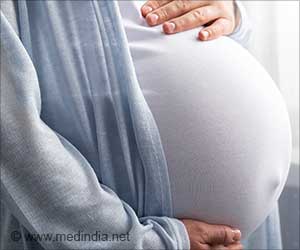
in 26%, chills in 16%, muscle pain in 16%, and chest pain in 10%.
What is the Relationship?
The emergency complications faced by symptomatic mothers include breech position, too little amniotic fluid, decreased fetal movement, or delayed labor progress.
In addition, the symptomatic women had a 64.5% chance of cesarean delivery (C-section, while asymptomatic women had 62% – a significantly higher rate than the normal U.S.population for C-sections (31.7%).
Moreover, the babies born to these mothers had required respiratory support (31.2% compared to 29%) and were admitted to the neonatal intensive care unit (43.8% compared to 36.2%).
The study also brings to light the risk of vertical transmission of the infection to the baby as one baby after delivery among the symptomatic group tested even positive for COVID-19.
READ RELATED: When will you be vaccinated? Has the plan changed as supply running low?
“COVID-19 has severe systemic effects on the body, especially symptomatic patients. It is possible that these effects are amplified in pregnant mothers, who have increased fetal and maternal oxygen demands. The decreased oxygenation could contribute to the increase in cesarean deliveries, as well as the possibility that physicians caring for symptomatic patients are cautious of the virus’ unpredictable nature, so they proactively recommend a cesarean delivery for medium- to high-risk deliveries,” says Mrs. Lane.
Facts on Pregnancy
- Some form of pregnancy complication is experienced by every 1 in 6 pregnant women
- 1 in 6 women engage in smoking and drinking alcohol when pregnant
- Among 6.4 million pregnancies in the United States (2001), around 51% were intended and 49% were unintended
- Several pregnancy-related deaths were reported to be increased from 7.2 deaths per 100,000 live births in 1987 to 17.3 deaths per 100,000 live births in 2017 in the United States as per Pregnancy Mortality Surveillance System
- Among the causes of the deaths, cardiovascular conditions were 15.5% and infection or sepsis contributed to 12.7% between 2014-2017
- Some of the factors associated with high-risk pregnancies are high blood pressure, preeclampsia, polycystic ovary syndrome (PCOS) , diabetes, kidney disease, lupus, multiple sclerosis, uncontrolled thyroid disease, obesity, HIV/AIDS, and other infections
Tips for Healthy Pregnancy
- Healthier lifestyle choices
- Abnormal weight gain or weight loss raises pregnancy complications; hence it is important to maintain a healthy weight during pregnancy
- Count your calories to keep the weight in check and ensure healthy eating. It is recommended that there is no extra calories requirement in 1st trimester, 340 extra calories/day required in 2nd trimester, and ~450 extra calories/day in 3rd trimester.
- It is recommended to include a well-balanced diet for proper nourishment, that includes fruits, vegetables, high fiber, whole grains, fat-free or low-fat milk & products, packs of vitamins and minerals & proteins.
- Limit intake of salt, solid fats (butter, or lard), sugar-sweetened beverages, and fast foods.
- Physical activity is encouraged of at least 150 minutes of moderate-intensity aerobic activity per week; engage in walking as well.
- Avoid sports where the chance of injury is more.
- Avoid exercises that include lying flat on your back after week 12 of pregnancy
References :
- Pregnancy Mortality Surveillance System – (https://www.cdc.gov/reproductivehealth/maternal-mortality/pregnancy-mortality-surveillance-system.htm)
- What are some factors that make a pregnancy high risk? – (https://www.nichd.nih.gov/health/topics/high-risk/conditioninfo/factors)
Source: Medindia
Source:









